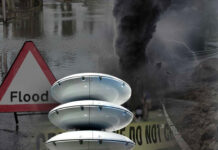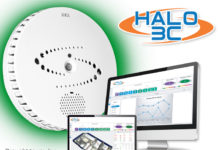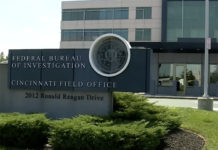
U.S. Customs and Border Protection (CBP) is reminding those who are planning to cross the border for the upcoming Christmas holiday season of a variety of steps they can take to ensure a smooth and efficient processing experience upon their arrival to the United States in El Paso and other border ports.

“Late December and early January are traditionally some of the busiest times of the year at border ports of entry,” said Hector Mancha, CBP Director of Field Operation in El Paso.
“By preparing for the inspection process and using a number of widely available resources travelers can help themselves cross the border as quickly as possible.”
“CBP is working to expedite the entry process while maintaining our homeland security mission.”
“CBP managers will remain engaged and ensure shifts and workloads are appropriately addressed.”
Members of the traveling public can monitor Border Wait Times online or obtain the CBP BWT app on their smartphone via the Apple App Store or Google Play allowing them to check wait times and make an informed decision on where to cross.

These wait times are updated hourly.
Travelers can also observe current traffic conditions at the Paso Del Norte, Stanton and Ysleta bridges on the city of El Paso website.
Also to avoid any potential delays or fines due to travelers bringing prohibited/restricted agricultural items, CBP encourages travelers to declare all agricultural items to a CBP officer upon arrival and before making their journey to consult the CBP Know Before You Go guide online.
(This video describes the things you should know about when traveling to international destinations and returning to the U.S. Courtesy of U.S. Customs and Border Protection and YouTube)
CBP strongly encourages travelers to apply for their tourist permits online.
Travelers will receive a provisional I-94 after submitting their application and payment online.
To finalize the I-94 process, a traveler must present themselves within seven days of their application and submit biometrics, a photo and be interviewed by a CBP officer.
Just this week CBP El Paso announced special lanes for those who prepay the I-94 document which will further expedite entry.

Prepay Form I-94 Permits
- The I-94 application will collect information that is otherwise collected in-person at the land port of entry, to include biographic information (name, date of birth, country of citizenship), passport details, visa details (if applicable), and petition/Student and Exchange Visitor Program (SEVIS) number (if applicable).
- In order to finalize the I-94 issuance process, a traveler must present themselves at a land port of entry within seven days of their application and submit biometrics, if applicable, and be interviewed by a CBP officer.
- Travelers should be prepared to show evidence of their residence, employment, and/or travel plans, if requested by the CBP officer.
- If the traveler does not complete their I-94 issuance process within seven days of their application, their provisional I-94 will expire and they will have to reapply and the pay the fee again.
- There are no refunds if the I-94 is not issued within the seven day period or if the traveler is denied entrance to the United States.
- The secure website is easy to use and payment can be made with a credit card, debit card, direct debit, or through PayPal.
- The benefits of this process include increased efficiencies during processing, decreased paper usage, a streamlined CBP inspection process for the traveling public and reduced operating costs.
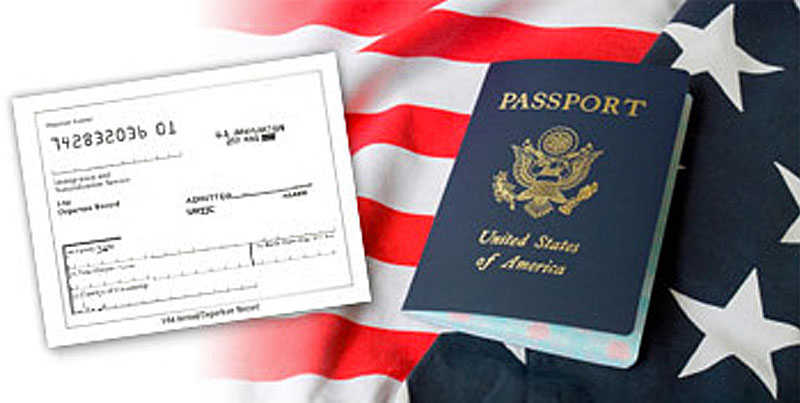 Form I-94 provides non-immigrant visitors evidence they have been lawfully admitted to the U.S., which is necessary to verify alien registration, immigration status, and employment authorization.
Form I-94 provides non-immigrant visitors evidence they have been lawfully admitted to the U.S., which is necessary to verify alien registration, immigration status, and employment authorization.
- In May 2013, CBP automated the I-94 in the air and sea environment.
- The automated system allows CBP officers to create an I-94 Arrival Record within primary and secondary inspection processing systems at the time of inspection with passenger manifest information, eliminating the need for paper forms and manual data entry.
- The automation of the I-94 Arrival/Departure Record has greatly improved the traveler experience while saving the U.S. government an estimated $34.5 million in its first two years.
- For more information regarding the I-94 land automation or to access an electronic Form I-94, visit www.cbp.gov/I94.
- To apply for your I-94 online, visit https://i94.cbp.dhs.gov.
CBP also encourages travelers to obtain and utilize radio-frequency identification technology equipped travel documents such as U.S. passport cards and the newer versions of the border crossing card and resident alien card so that they can utilize designated and marked Ready Lanes.
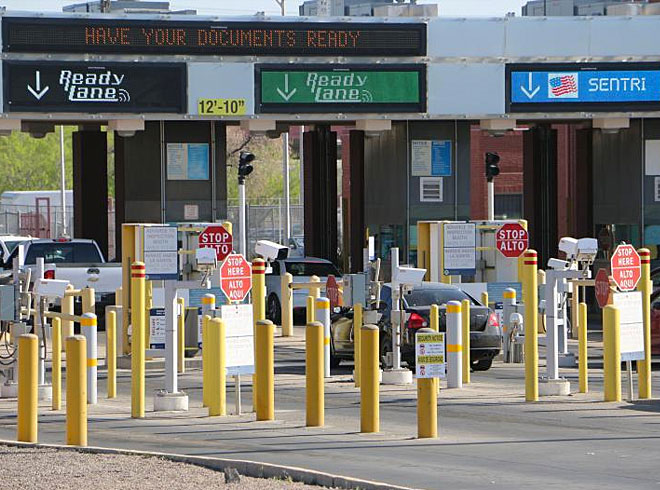
Processing in Ready Lanes is 20 percent faster than normal lanes and provide a time savings of up to 20 seconds per vehicle.
Those who have renewed their entry documents within the last 24 months already have RFID and may not know it.
CBP encourages travelers to obtain RFID entry documents to use Ready Lanes and enroll in trusted traveler programs.
The El Paso port of entry will continue to implement the very successful All Lanes Open Initiative during the holiday period.
CBP staffs all vehicle and pedestrian lanes from 6 a.m. until 10 a.m. weekdays and during historically busy periods on weekends.
This effort will be supplemented with the ongoing public-private partnership between CBP and the city of El Paso in which the city the city identifies and funds periods where additional CBP service is desired.
To speed the border crossing process travelers should prepare before arriving at the inspection booth.
- Please have crossing documents available for the inspection.
- Travelers should declare all items acquired abroad to avoid fines and penalties.
- This would include agricultural products and gifts.
- It is also best that any Christmas gifts are not wrapped in the event CBP needs to perform a more thorough inspection of the product.
- In addition, individuals should end cellular phone conversations before arriving at the inspection booth.
Knowing that this is a busy period travelers should build extra time into their trips in the event they cross during periods of exceptionally heavy traffic.
- This includes SENTRI/Dedicated Commuter Lane (DCL) users.
- During periods of heavy travel, border crossers may wish to consider alternative entry routes.
- Usually wait times are shorter at the Tornillo and Santa Teresa crossings than in El Paso.
- They should also travel during non-peak hours if their schedule allows.
SENTRI’s Inspection Process and Equipment

- At each of the sites, SENTRI allows pre-approved participants and their pre-registered vehicles to enter the United States through a DCL (see Figure 1).
- This lane cannot be used by anyone other than those who are enrolled in SENTRI and this lane is only open to non-commercial vehicles.
- Using Dedicated Short Range Communications technology, registered vehicles are equipped with a radio frequency transponder that sends a unique signal to SENTRI’s automated operating system as these vehicles approach.
- Triggered by this signal, SENTRI’s automated operating system then displays information about enrolled travelers and their registered vehicle on a computer screen inside an inspection booth along with information and photographic images of all registered occupants authorized to cross the border in that particular vehicle.
- Inspection booths are staffed by either INS or Customs inspectors trained to use SENTRI’s automated operating system.
CBP also suggests the drivers insure that their vehicles are properly maintained and mechanically sound and that occupants avoid riding in areas of vehicles not specifically designed to carry passengers.
Failure to follow these steps can expose crossers/passengers to carbon monoxide.
U.S. Customs and Border Protection is the unified border agency within the Department of Homeland Security charged with the management, control and protection of our nation’s borders at and between the official ports of entry.
CBP is charged with keeping terrorists and terrorist weapons out of the country while enforcing hundreds of U.S. laws.
















